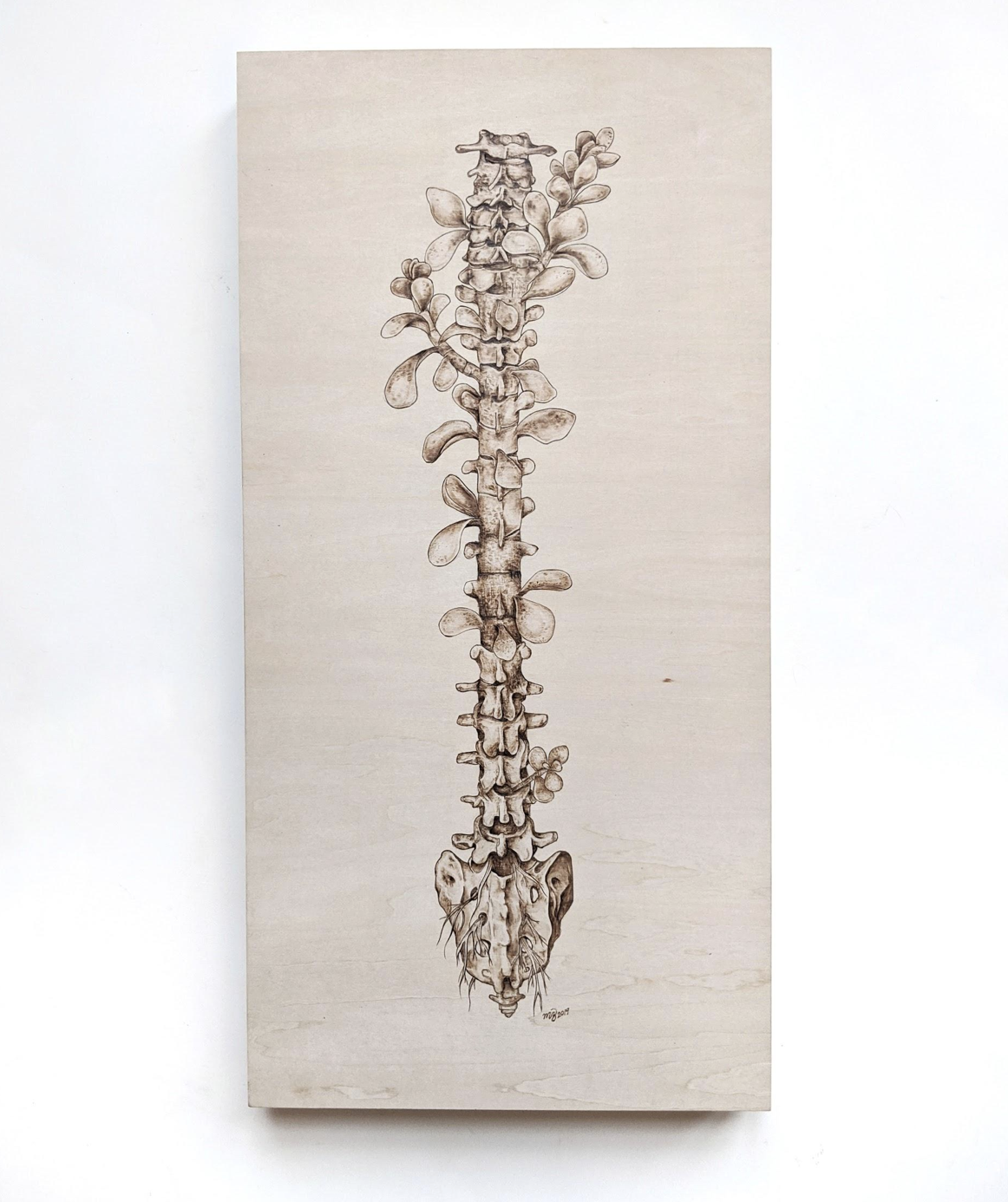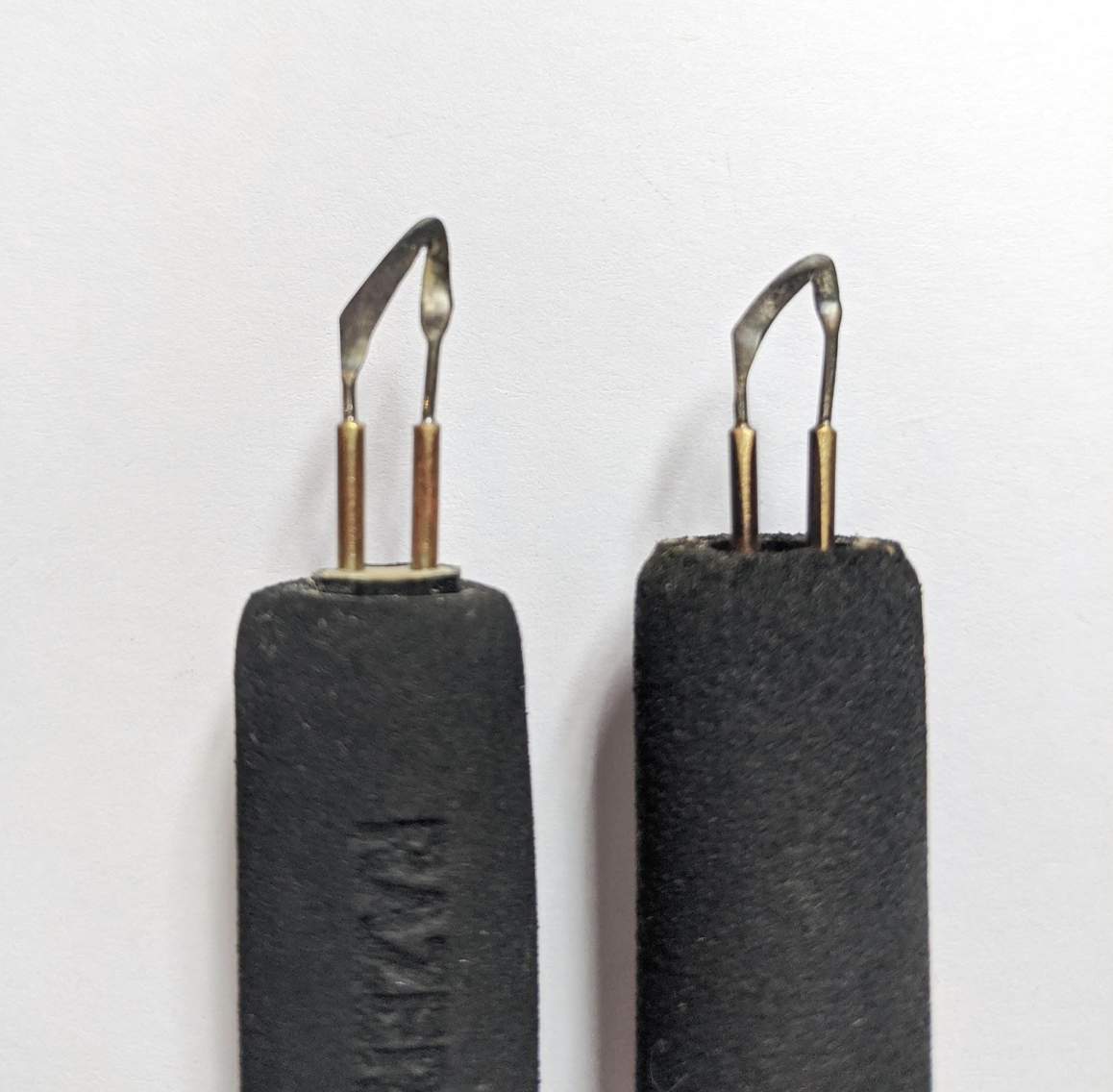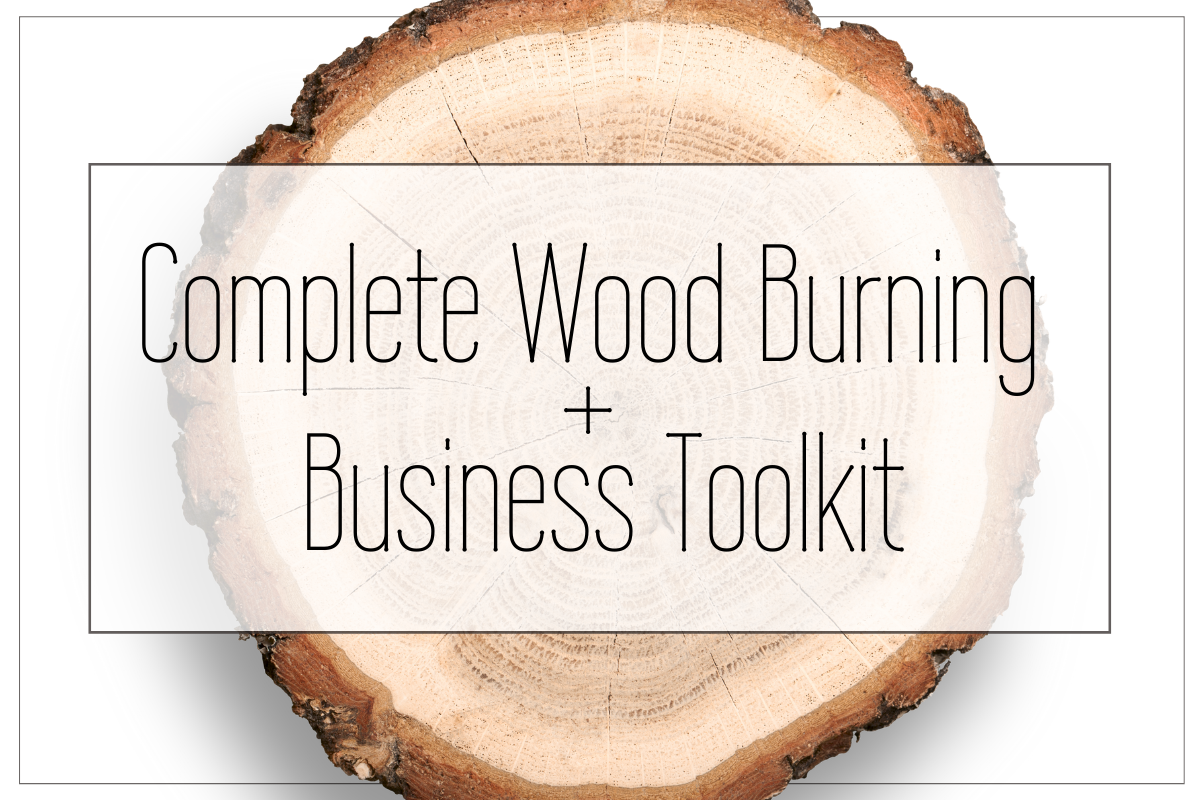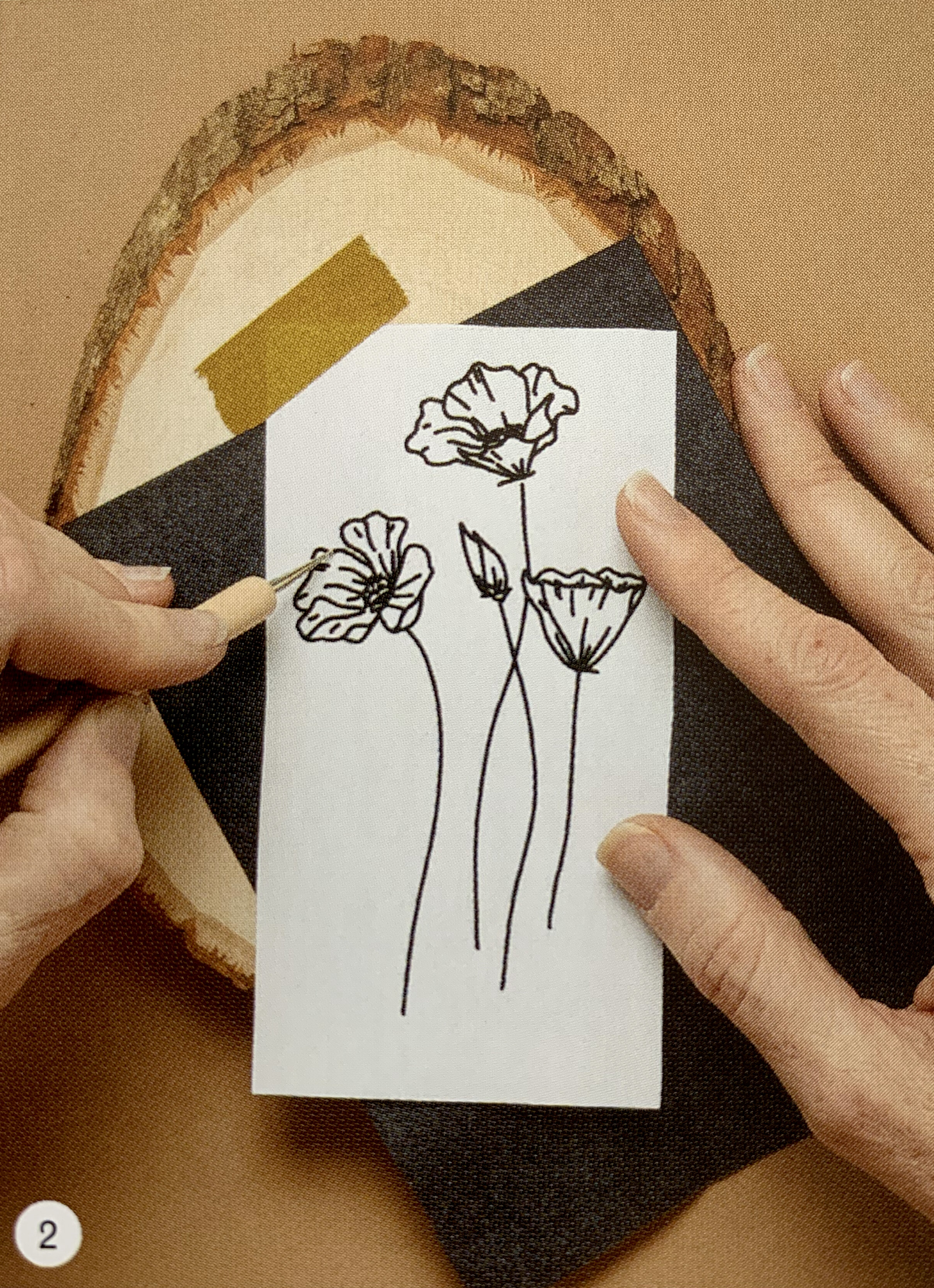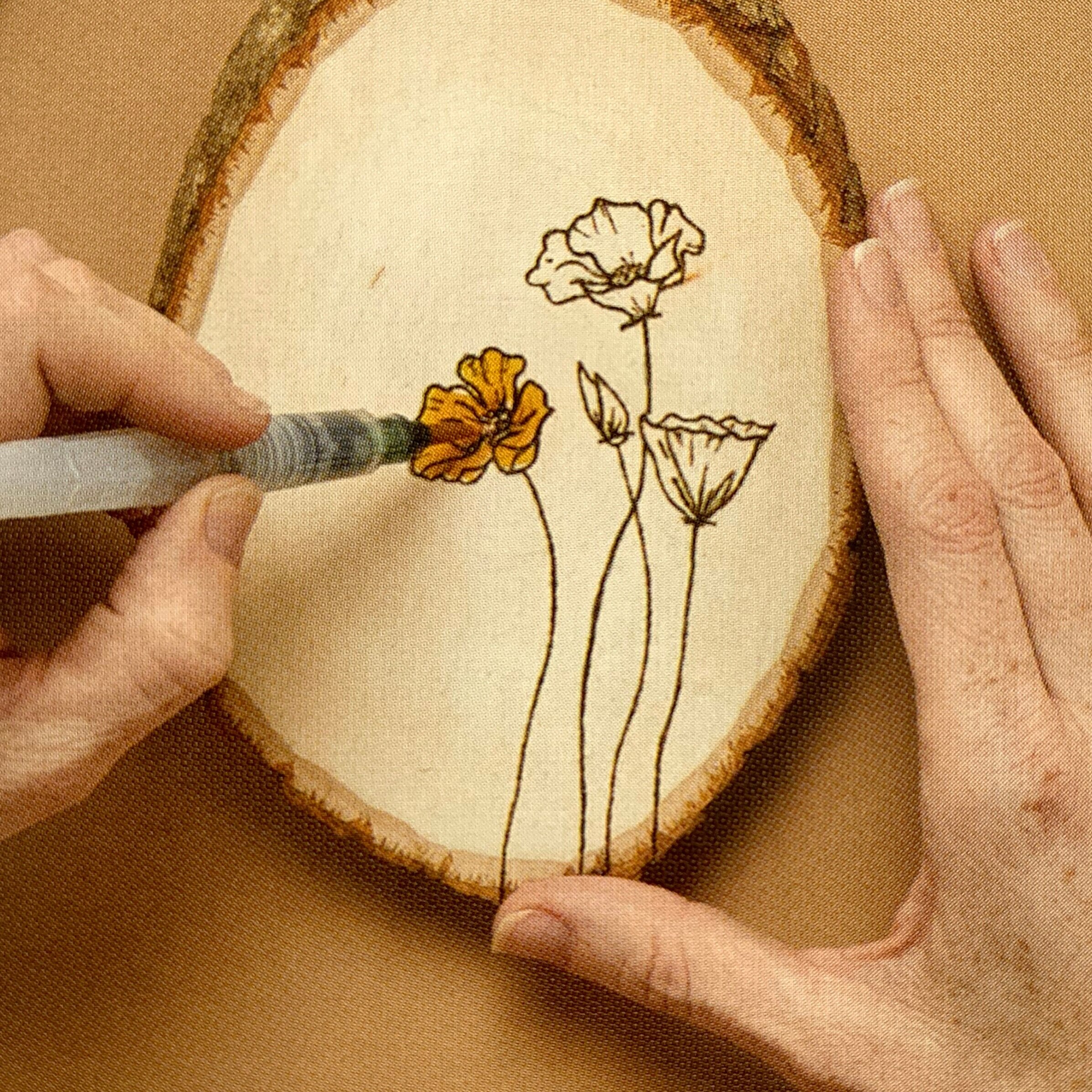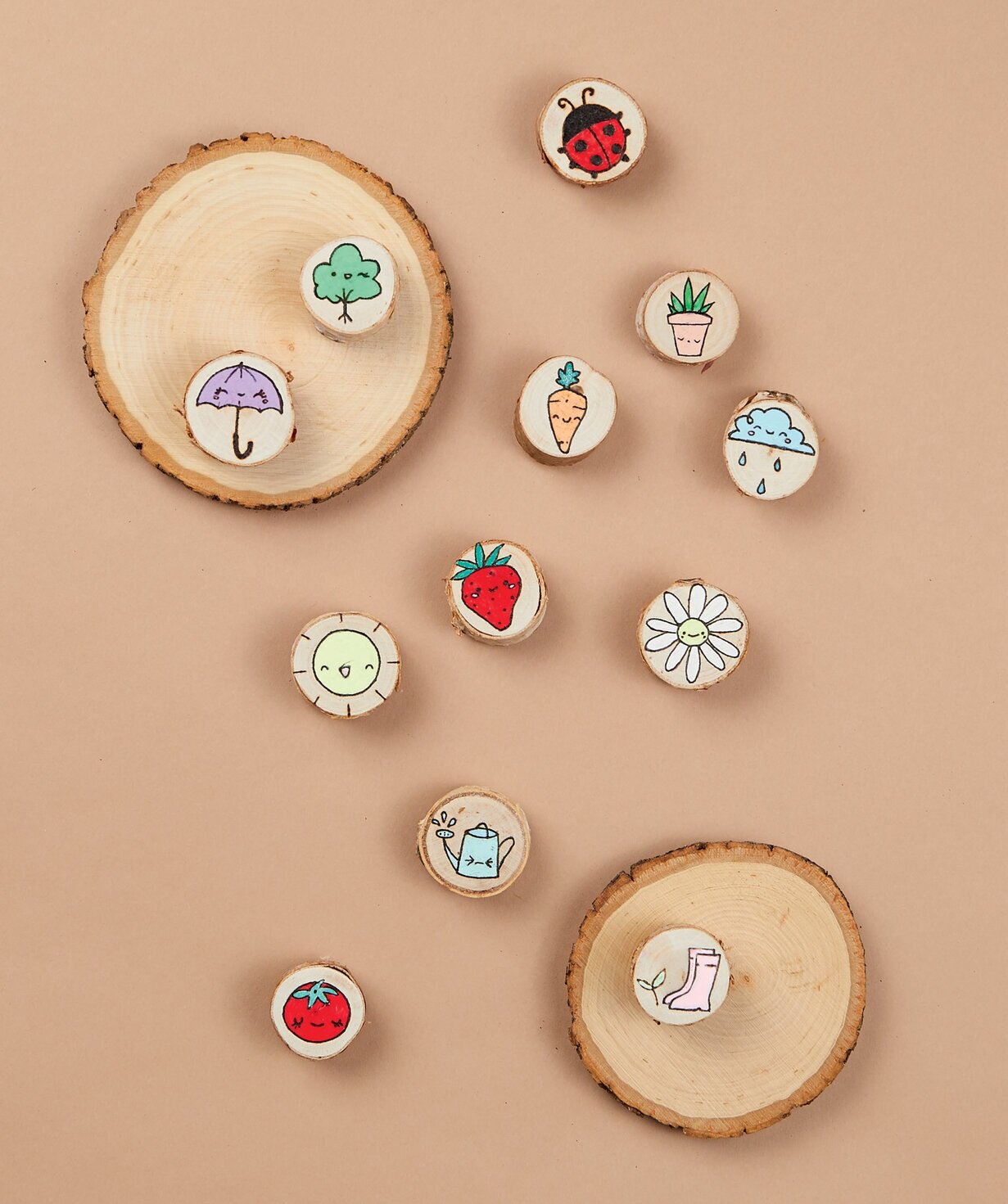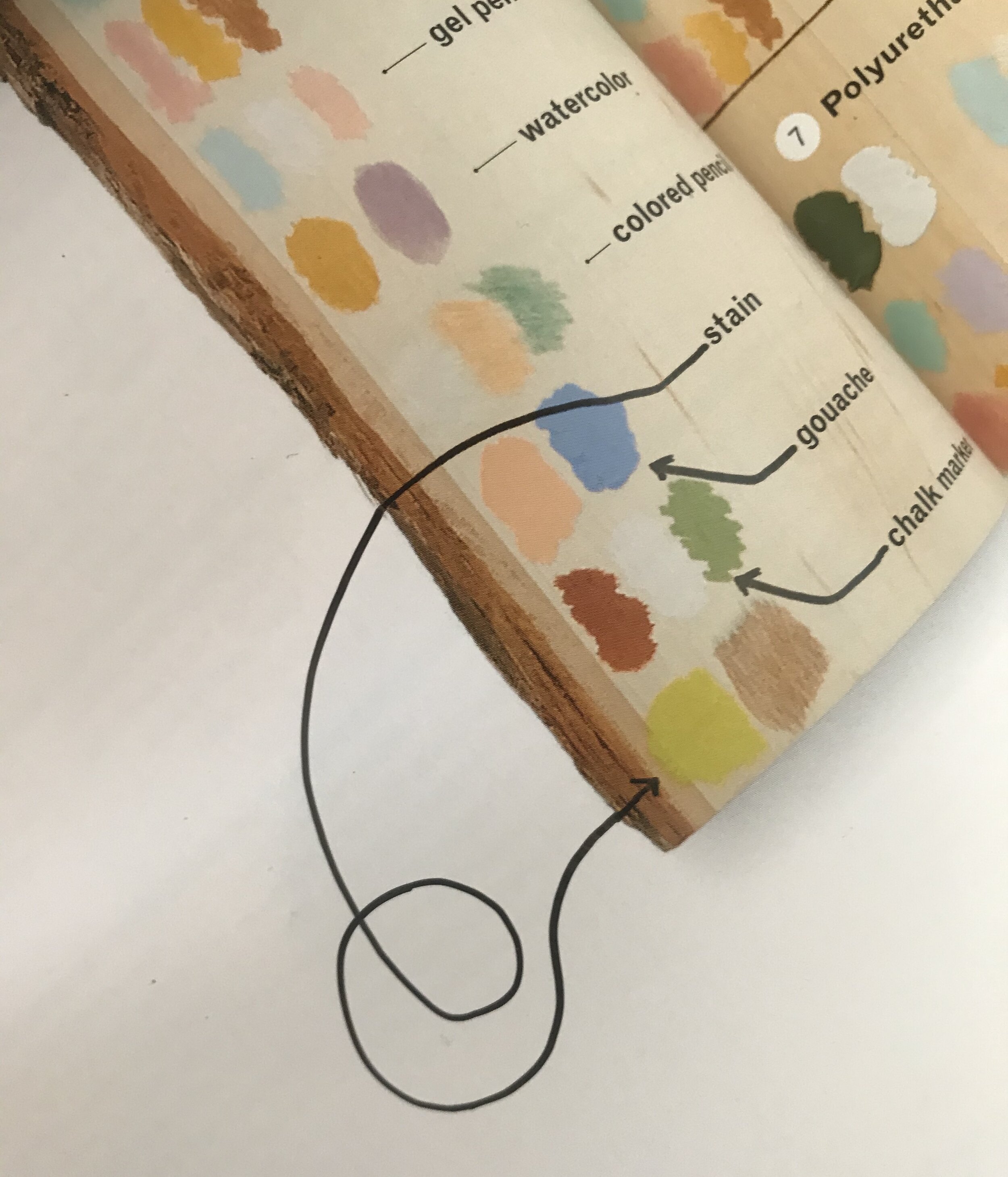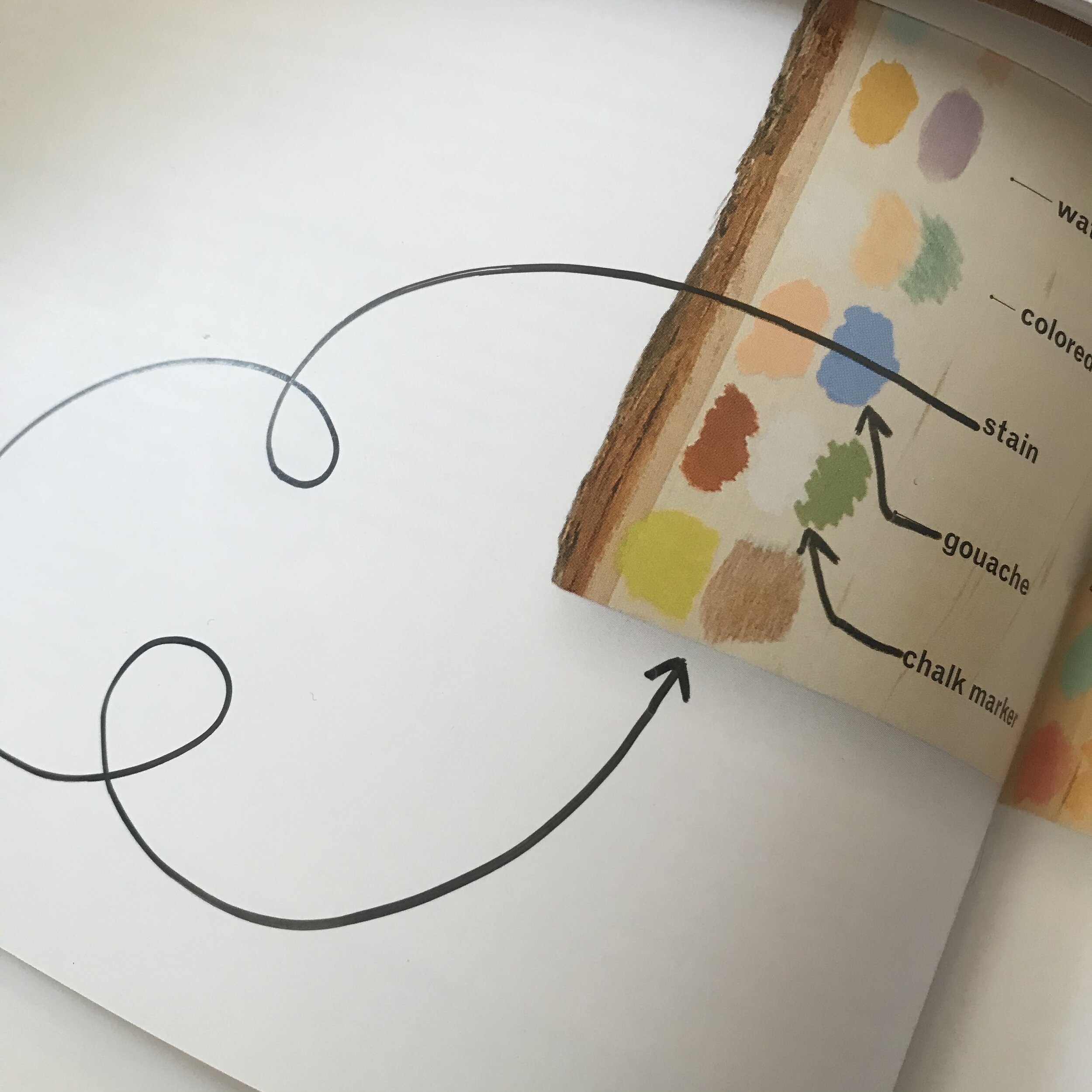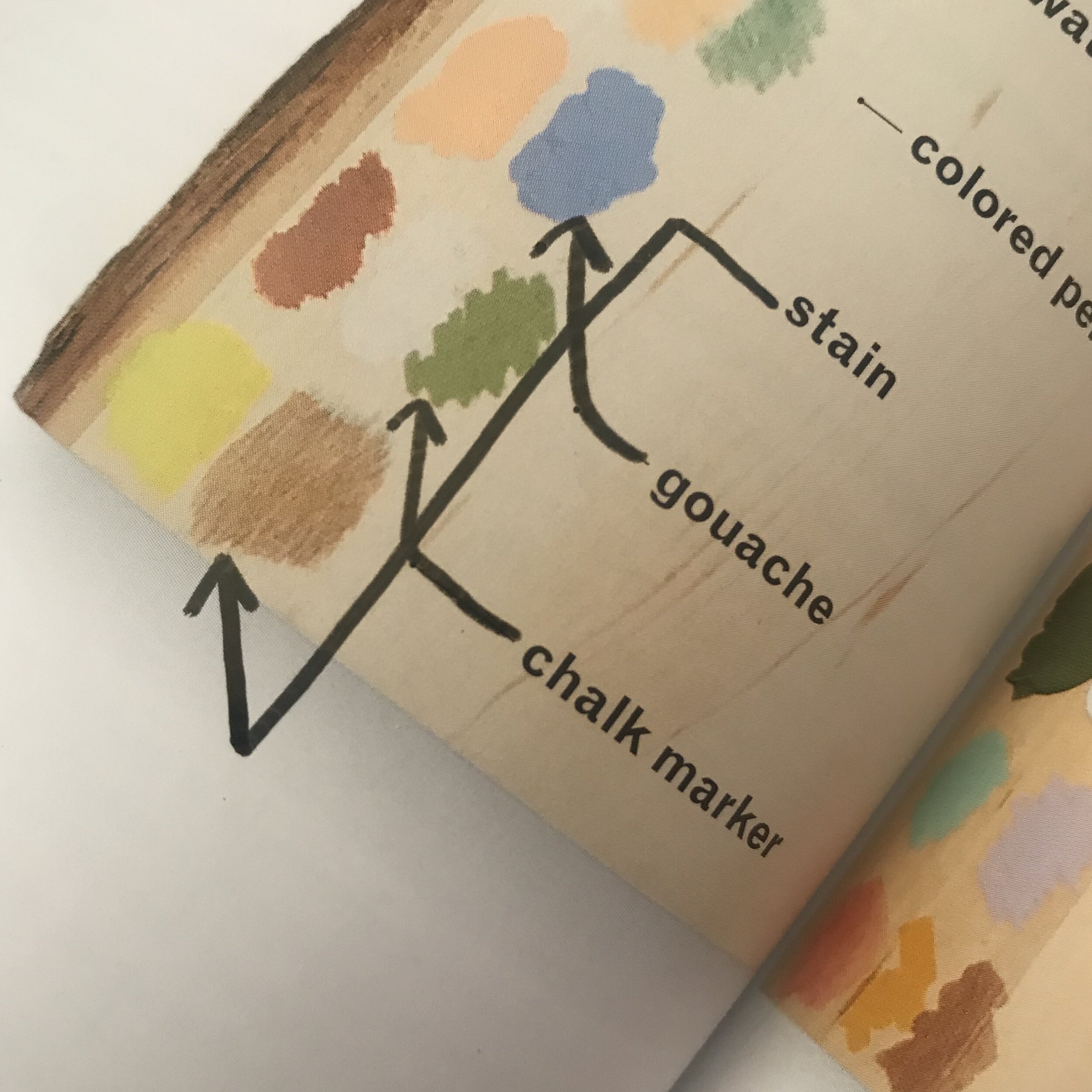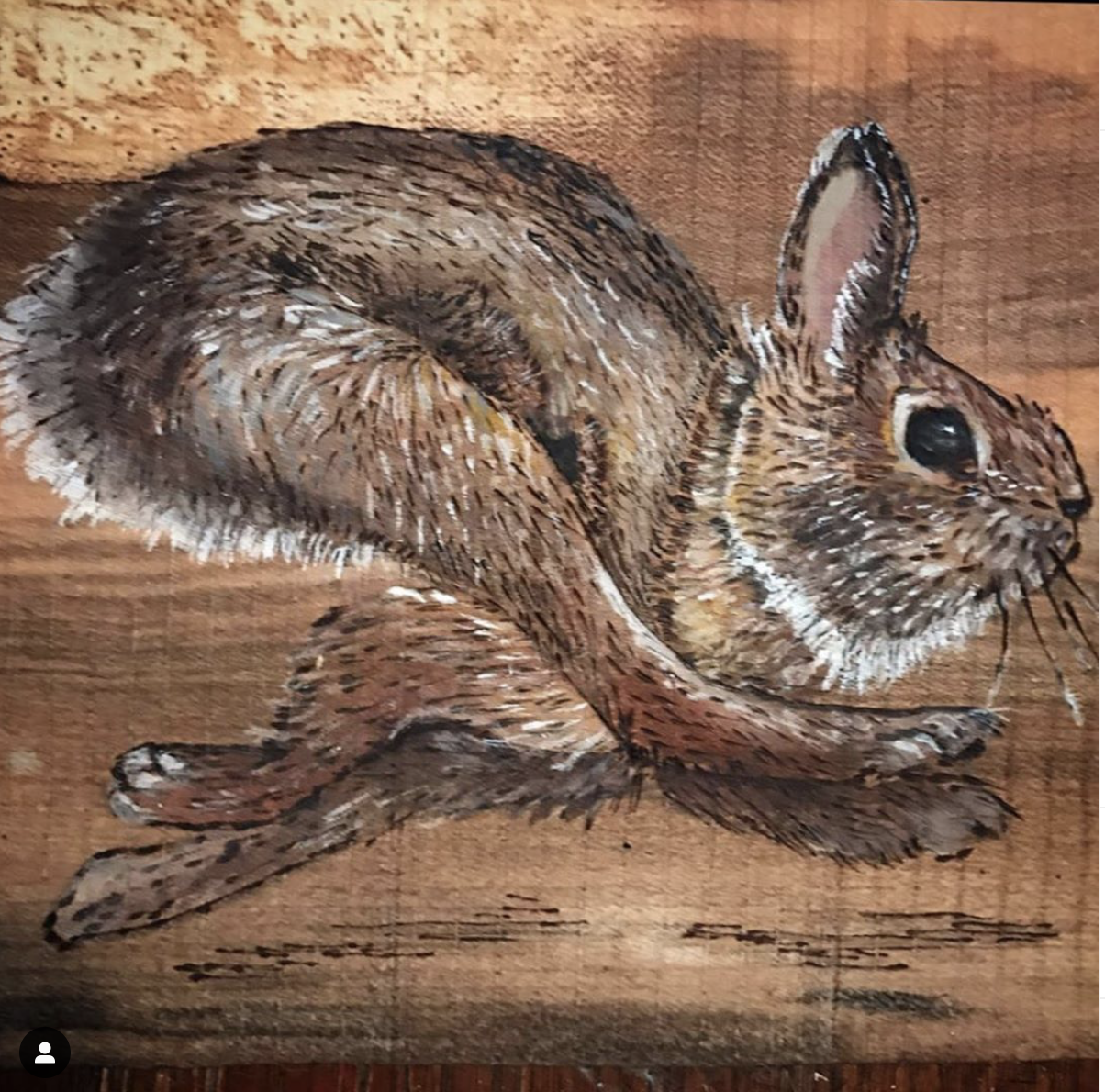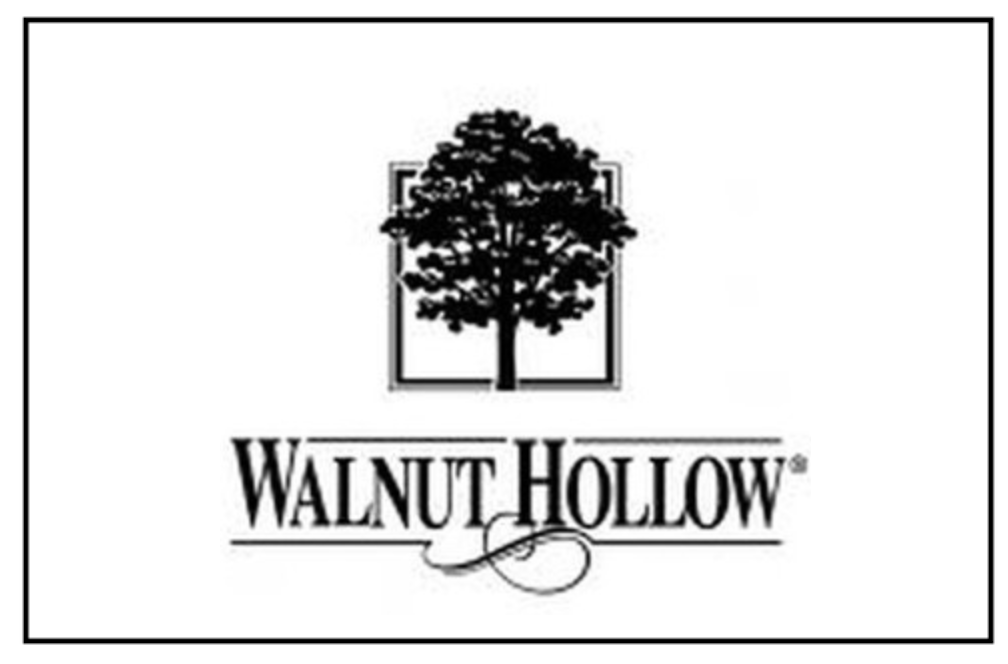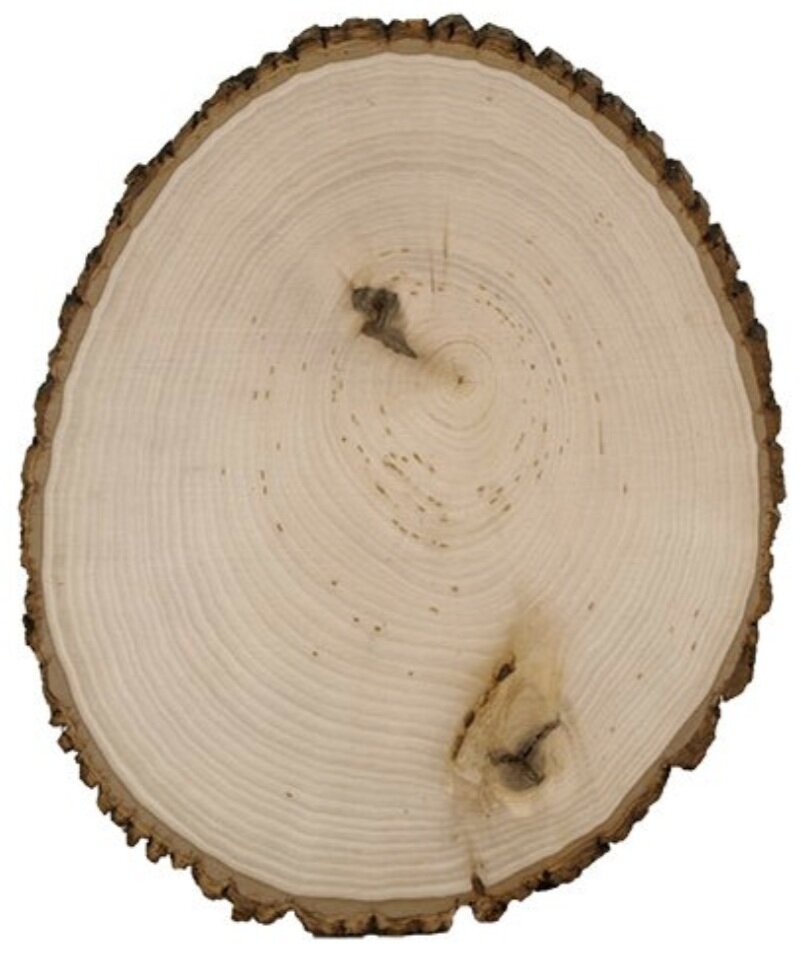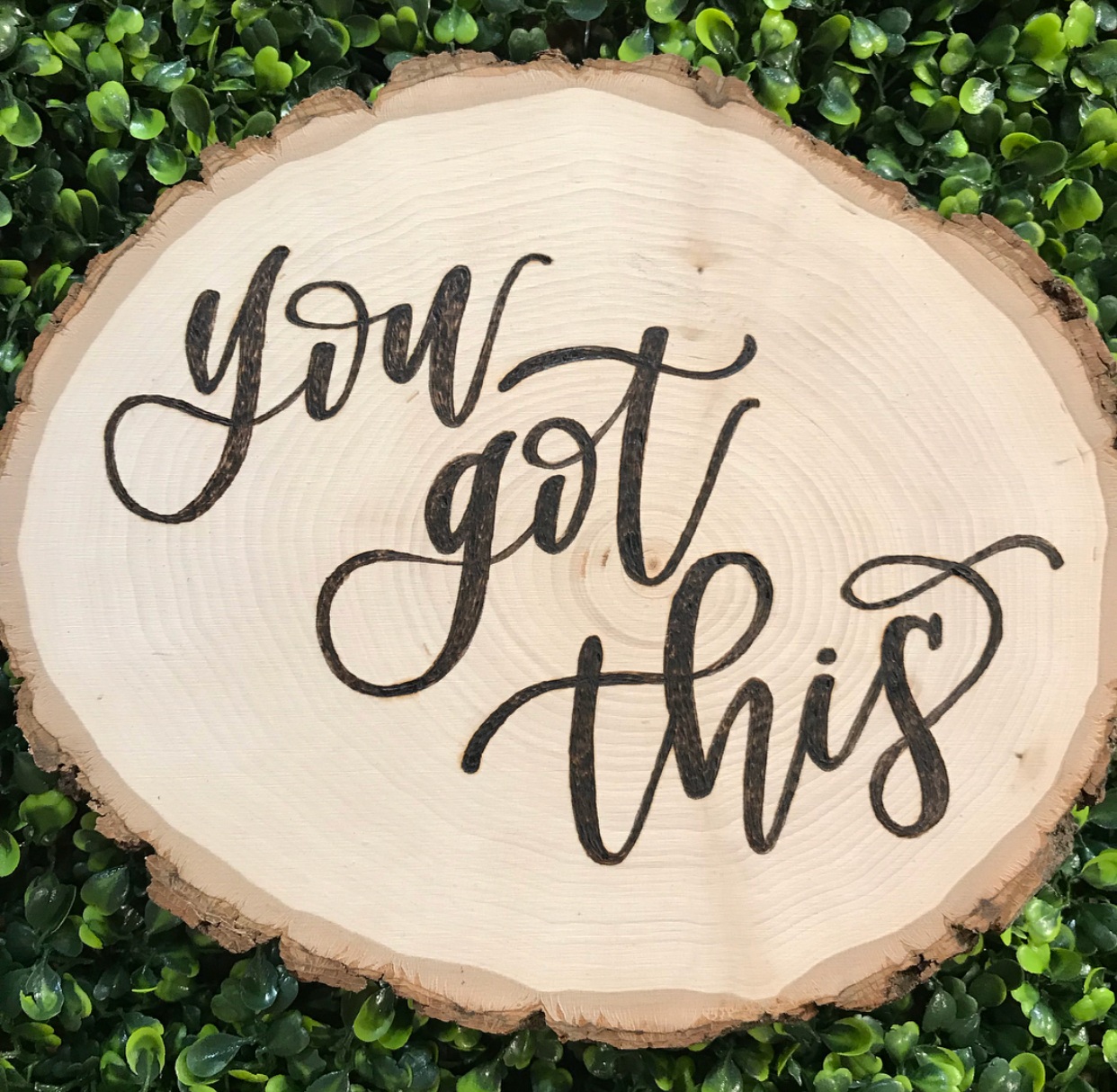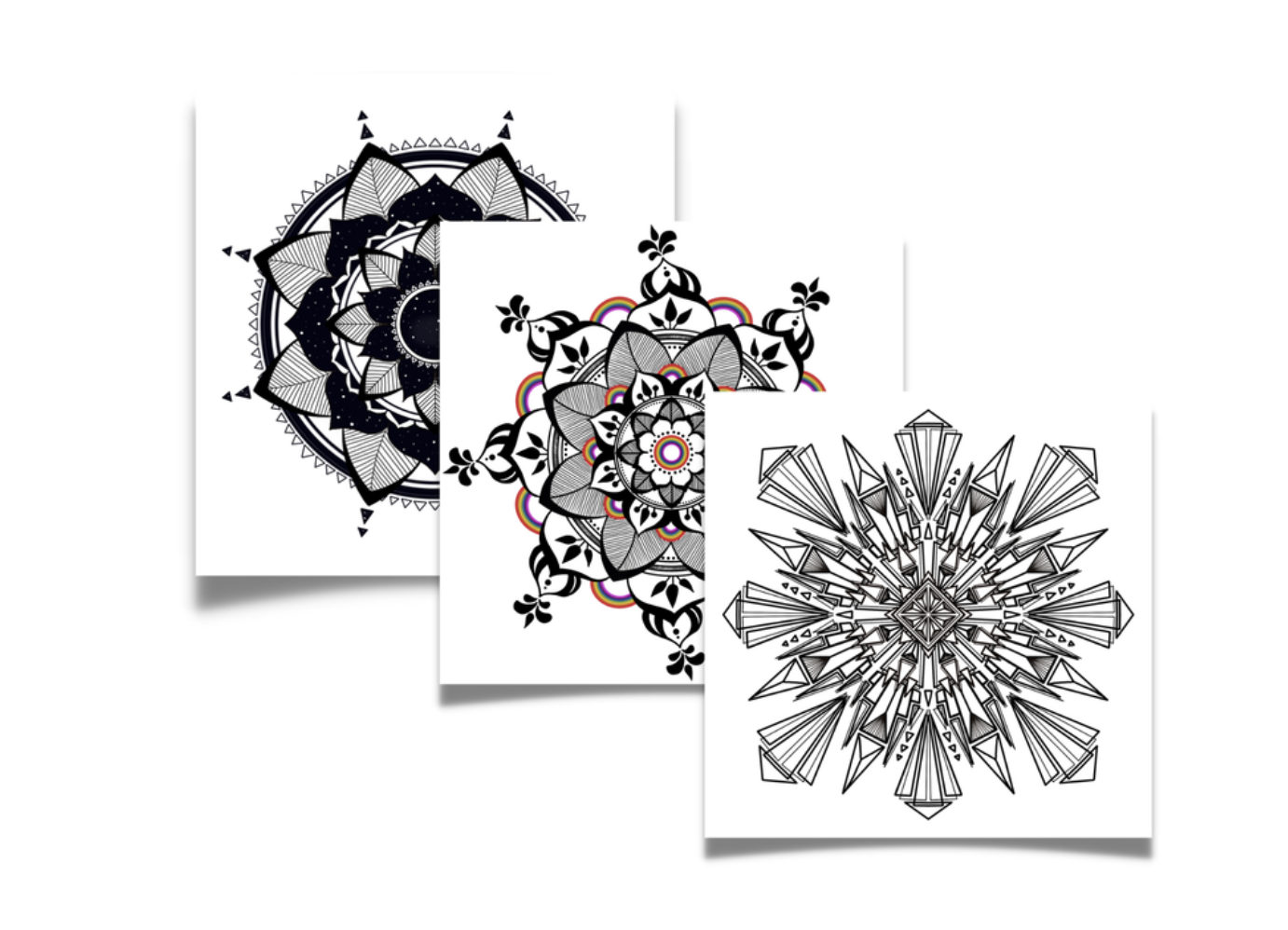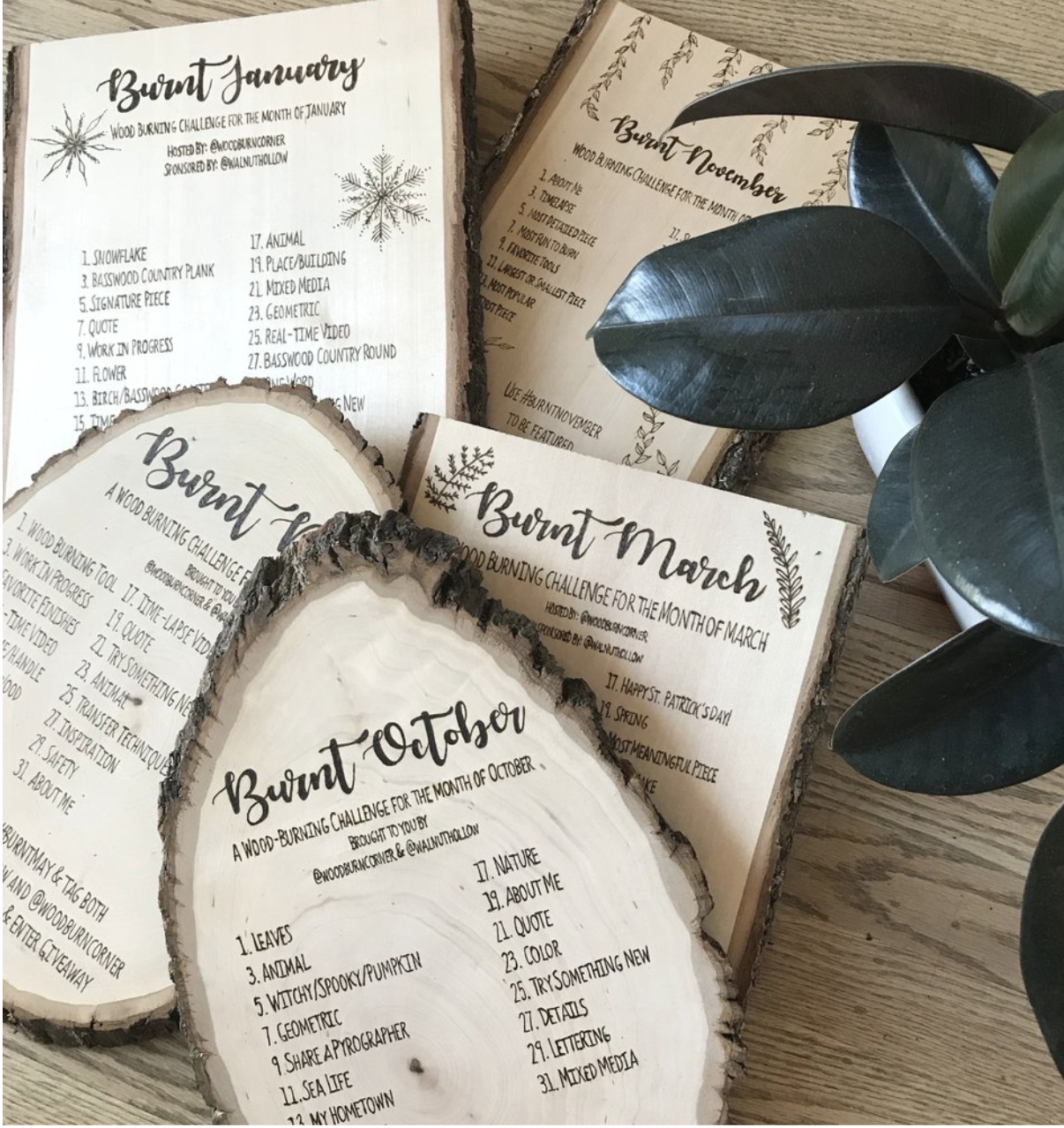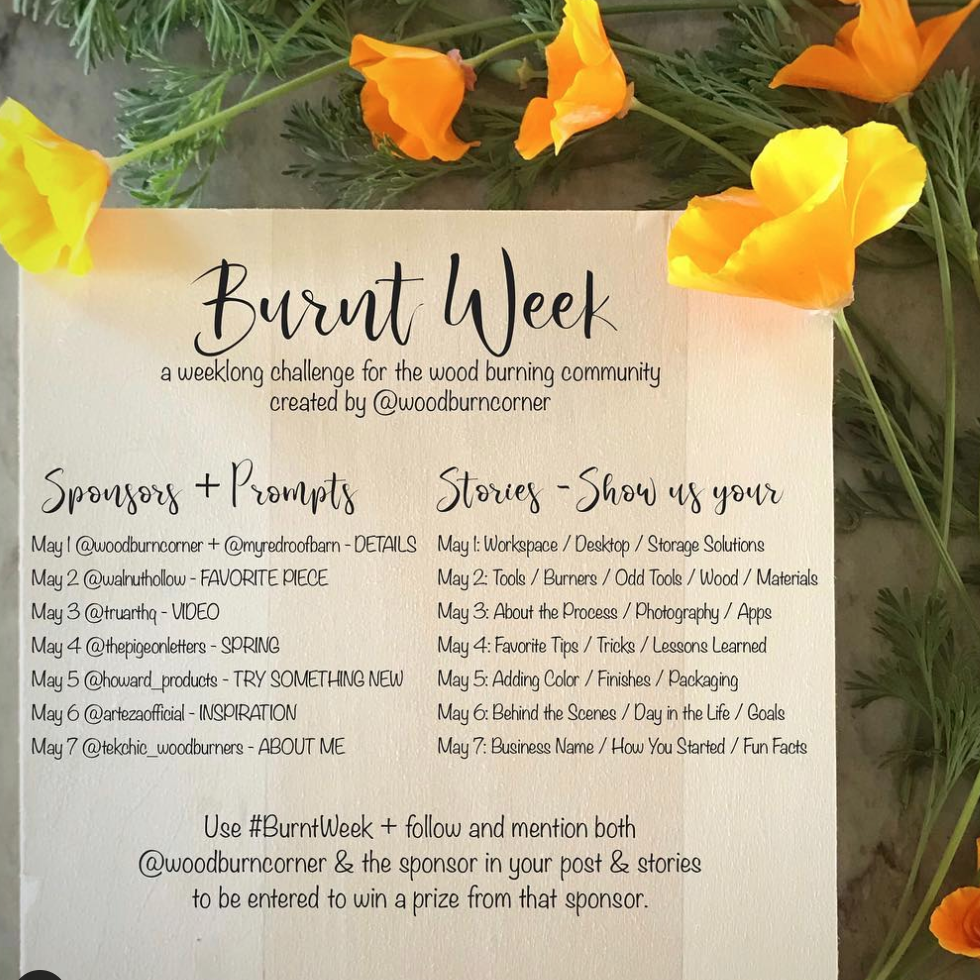When I first started, I did not consider myself an artist. I burned words from free fonts. It wasn’t super artistic, but it did take some skill. Sizing, placement, font choices, steady transfer, and burning hand, etc. I had to learn how to do all those things. Heck, I used to transfer with an exacto knife, because I hadn’t learned any transfer techniques, yet. It was trial and error.
I enjoyed burning for fun, and for friends. It was an inexpensive, rewarding, and fun side gig to my full time job as Mom of three (aged 3 and under at the time). When I joined Instagram in 2016, I found myself wanting to burn beyond just words. I kept wondering what different artists’ work would look like burned rather than painted or drawn. I was still building up my own drawing skills, and confidence.
So, I would message that artist and ask if they would want to see their art burned. Almost every time it would end in a collaboration. I met so many incredible artists and made so many friends by doing this. I also gained skill through practice. I bought art, pyrography, and drawing books and would practice. I would also make wood burned logos for small businesses for free as a giveaway. This was another skill building, following building, and friend/community building exercise.
I started the Burnt Challenges, so that I could push myself and my craft further and also meet and mingle with other pyrographers. I studied, and tried a dozen transfer techniques, and still utilize transfer techniques for almost every single burn I create, because I want to be able to recreate it, I want consistency, and a really good, clean burn.
Eventually, over time, I got to the point where I felt comfortable making my art from scratch almost 100% of the time, although, I still love a good collaboration. My iPad Pro and Procreate app also helped with this. (If you have one, you know, and if you don’t yet, I highly recommend saving up for one. They are game-changers!). When mistakes can easily be re-done, and lines can be smoothed and perfected in the design phase, it made it a whole lot less scary for me to make mistakes.
This is why I teach that if you can trace, you can burn. The method I found that works best for me, and the method I teach means that by the time I pick up my burner, all I am doing is following my lines.
Another thing that made a WORLD of difference in my growth was connecting with so many pyrographers around the globe who, like me, were willing to share tips/tricks/tools/techniques. Embracing community over competition, and having a community that embraces it, too, means everyone grows faster and easier. “A rising tide lifts ALL boats.”
I am still constantly learning, and pushing myself and my craft. Will I ever get to the point with my pyrography where I am making photorealistic pieces? Most likely not, because that is just not my goal. I don’t have the patience nor the desire to make them, but man, I do respect the heck out of those that do! There is no denying the skill of those pyros out there who can create photorealistic pieces.
The lesson to take with you
Here’s the thing that I hope people take in, though; I could easily look at their art and say to myself that what I make isn’t art in comparison. That what I do doesn’t count because it’s not good enough, and some people I am sure believe this. I could choose to have that competitive, comparison, limiting, scarcity mindset OR I can CHOOSE to have the mindset that their art does not take away from mine, nor does mine take away from theirs. Art is meant for people to enjoy, and I think there is more than enough space for every type of artist. Your art, whether it be burned fonts (royalty free, of course) or photorealism, is valid. REPEAT: YOUR ART IS VALID
Community over competition
The reason why choosing community over competition is so easy for me is because I believe whole heartedly that on this great big Earth of ours, there is more than enough space for all of us, and it is a whole lot more fun to be a community, and help each other out, rather than see each other as competition. It wasn’t always easy, and certainly wasn’t friendly when I first started on Instagram in the pyrography space, but any time I would feel that pang of comparison, or competition, I would lean in harder to community, and it quickly became clear how much better it was and felt all around to lift each other up and support one another. When I could be happy for their successes.
My goals with my pyrography is to make art that makes me happy, encourage others to pick up the pyro pen, raise awareness of pyrography and its mental health benefits, help people in any and every way I can, inspire creativity, and bring the community together.
I want to give people permission to pick up the tool in the first place. I strongly believe that anytime someone takes the time to be creative and create something, they are making art, and I wish more artists would own that title.
We all know that art is therapeutic, this has been proven time and time again. The amount of goodness that wood burning has brought to my personal life and mental health over the years is staggering. I truly believe that allowing yourself to be creative is so important, so whatever stage you are at in your pyrography journey, know that I am right there with you encouraging you every step of the way.
Much love, my fellow Pyros and happy burning,
Rachel




